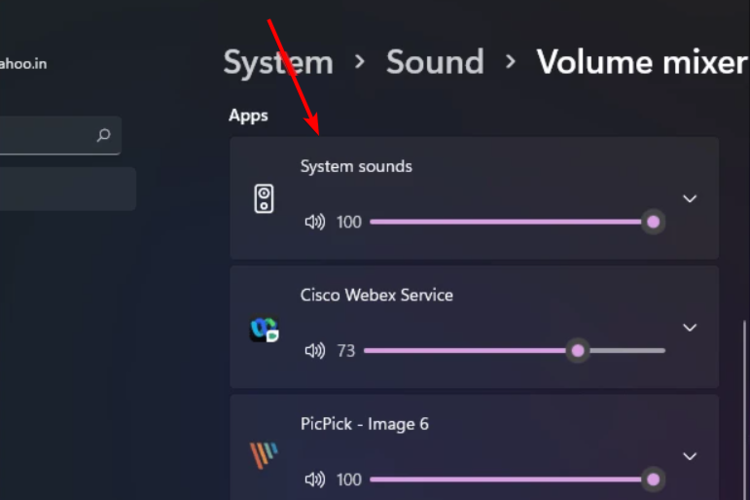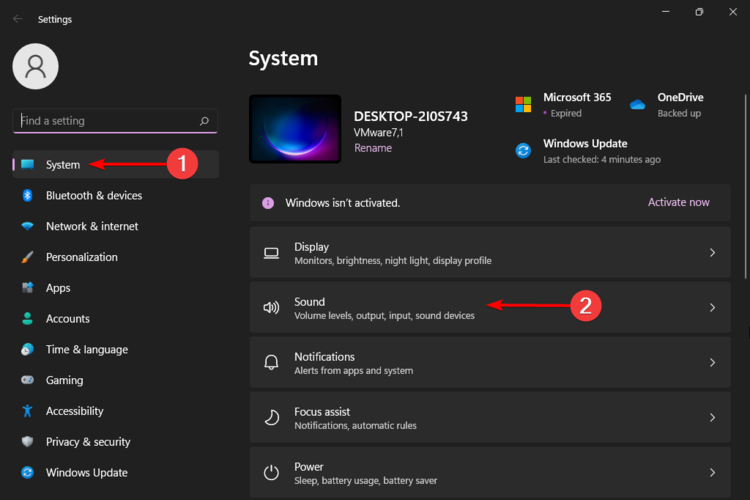How To Set Apps Volume And Device Preferences on Windows 11
The process is different from that on Windows 10, but still easy
4 min. read
Updated on
Read our disclosure page to find out how can you help Windows Report sustain the editorial team Read more
Key notes
- To create a unique environment, controlling sound volume for individual Windows 11 apps is a must.
- You're allowed to do it with the Volume mixer option, accessed through your taskbar.
- The Volume mixer option is integrated into Windows 11's Settings menu, so you can easily use it as central support.

Windows 11 brings up a new look, being a fresh breeze of air. It is extremely user-friendly and allows you to perform a lot of improved actions.
For a more personalized experience, it seems like some users want to find out how to control sound volume for individual apps in Windows 11. You can mute certain apps, as well as configure an exact volume level for each app.
Why should I configure individual app volume control in Windows 11?
As mentioned before, changing and controlling the sound volume for Windows 11 individual apps offer you a more personalized digital environment.
In these terms, you’ll be able to set this feature according to your most used and unused applications.
You can choose to increase the apps’ music and decrease the social media ones, so you can enjoy your favorite playlists without being bothered by notifications.
Not to mention that you’re also allowed to change Windows 11 startup sound using some extremely simple steps.
How can I set apps volume and device preferences in Windows 11?
1. Use Windows 11’s Taskbar
- Look at the right side of your Windows 11 Taskbar.
- Right-click on the Volume icon, then choose to Open volume mixer.
- The Volume mixer settings window will directly open.
- From there, you can adjust the volume for each app, by changing the slider.
2. Use Windows 11’s Settings menu
- Hit the Windows key, then open Settings.
- Go to System, then navigate to Sound.
- Select the Volume mixer option, then will be opened the same window as in the previous solution.
- As learned before, just adjust the volume for each desired app, by changing the slider.
3. Use a third-party software
Another cool option is to try the support of a dedicated tool. And what does it means? You’ll have automatic help to control each Windows app on your device.
In these terms, to turn the volume up or down, you’ll no longer need to access the standard Windows menu.
Novices in the PC area will be able to easily manage this feature without struggling through time-consuming processes.
Moreover, experienced users will be allowed to control the system volume via dedicated hotkeys or lock it against accidental modification.
Producers are now preparing the latest versions, so you’ll probably have to wait a bit more to properly use them in Windows 11.
However, do not worry! We’ll come up with the big news as soon as possible. So make sure you constantly keep an eye on our content to be the first one who discovers some of the great feats.
Also, keep in mind that some of them will be available on the new and improved Microsoft Store.
What are some common Windows 11 apps sound problems?
Even if you’re able to adjust and control the sound volume for individual Windows 11 apps, like any other digital aspect, this one can be occurred by annoying issues.
Because we want you to be prepared, we selected some of the most common related problems.
- Audio service not responding – If your Windows Audio service getting into trouble, you’ll probably end up having no sound on your computer and apps.
- There are no audio devices installed – Usually, it appears as an error message on your PC and most of the time it is realted to your drivers.
- Computer or laptop gives no sound – This is another general issue that can affect both desktop and laptop PCs, but there are a few options that will solve it.
- No sound Realtek – This one is specific to Realtek audio drivers, so the first thing to do is checking the related drivers.
As you’ve probably noticed, these are similar to what we know from the previous OS version. So, if encountering such issues, you should read our Windows 10 sound problems related article.
Most OS settings, including volume control, have received major changes in UI. You can convince yourself by checking some features, comparison & update tips of Windows 11 vs Windows 10.
Thus, the sound settings and volume control may look different than before.
To build a unique experience, we presented only the most accessible options to control sound volume for Windows 11 individual apps.
However, if you have additional sound devices but headphones are not working in Windows 11, over-using the sound volume is one of the related explanations.
For those times when you’re receiving important calls and you should be muting your mic in all other apps you’re using, do not hesitate to check how to enable the Universal Mute button in Windows 11.
We hope you managed to set apps volume and device preferences in Windows 11 using our guide.
Are you still wondering how to personalize your digital environment? If so, share your thoughts with us by leaving a comment in the section below.













